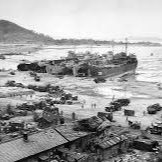North Korea - 70 years of history

About
What behind the story!
Micronesia, Federated States of
Description
North and South Korea have been separated for over 70 years, since the Korean Peninsula turned into a startling loss from the raising Cold War between two adversary superpowers: the Soviet Union and the United States.
A Unified Korea
For a really long time before the division, the landmass was a solitary, bound together Korea, managed by ages of dynastic realms. Involved by Japan after the Russo-Japanese War in 1905 and officially attached five years after the fact, Korea abraded under Japanese pilgrim rule for quite some time — for the rest of World War II, when its division into two countries started.
"The catalyzing occurrence is the choice that was made — truly, without the Koreans in question — between the Soviet Union and the United States to partition Korea into two occupation zones," says Michael Robinson, teacher emeritus of East Asian Studies and History at Indiana University, who has composed broadly on both current Korea and its set of experiences.
Why Was Korea Divided?
In August 1945, the two partners "in name as it were" (as Robinson puts it) separated command over the Korean Peninsula. Over the course of the following three years (1945-48), the Soviet Army and its intermediaries set up a socialist system in the space north of scope 38˚ N, or the 38th equal. South of that line, a tactical government was framed, upheld straight by the United States.
While the Soviet strategies were broadly well known with the heft of the North's worker and laborer populace, most working class Koreans escaped south of the 38th equal, where most of the Korean populace dwells today. In the mean time, the U.S.- upheld system in the South obviously preferred enemy of socialist, conservative components, as per Robinson.
"A definitive goal was for the Soviet Union and the United States to leave, and let the Koreans sort it out," he makes sense of. "The difficulty was that the Cold War mediated… .And all that was attempted to make a center ground or to attempt to reunify the promontory is frustrated by both the Soviet Union and the United States not having any desire to give in to the next."
About
What behind the story!
Micronesia, Federated States of
Description
North and South Korea have been separated for over 70 years, since the Korean Peninsula turned into a startling loss from the raising Cold War between two adversary superpowers: the Soviet Union and the United States.
A Unified Korea
For a really long time before the division, the landmass was a solitary, bound together Korea, managed by ages of dynastic realms. Involved by Japan after the Russo-Japanese War in 1905 and officially attached five years after the fact, Korea abraded under Japanese pilgrim rule for quite some time — for the rest of World War II, when its division into two countries started.
"The catalyzing occurrence is the choice that was made — truly, without the Koreans in question — between the Soviet Union and the United States to partition Korea into two occupation zones," says Michael Robinson, teacher emeritus of East Asian Studies and History at Indiana University, who has composed broadly on both current Korea and its set of experiences.
Why Was Korea Divided?
In August 1945, the two partners "in name as it were" (as Robinson puts it) separated command over the Korean Peninsula. Over the course of the following three years (1945-48), the Soviet Army and its intermediaries set up a socialist system in the space north of scope 38˚ N, or the 38th equal. South of that line, a tactical government was framed, upheld straight by the United States.
While the Soviet strategies were broadly well known with the heft of the North's worker and laborer populace, most working class Koreans escaped south of the 38th equal, where most of the Korean populace dwells today. In the mean time, the U.S.- upheld system in the South obviously preferred enemy of socialist, conservative components, as per Robinson.
"A definitive goal was for the Soviet Union and the United States to leave, and let the Koreans sort it out," he makes sense of. "The difficulty was that the Cold War mediated… .And all that was attempted to make a center ground or to attempt to reunify the promontory is frustrated by both the Soviet Union and the United States not having any desire to give in to the next."
